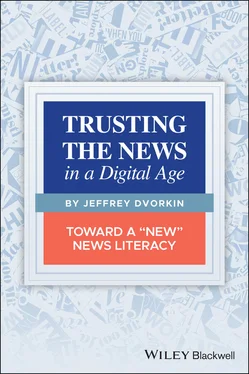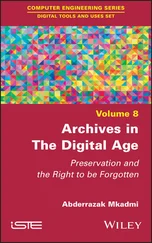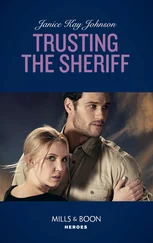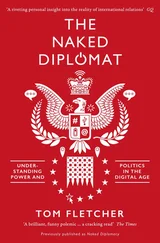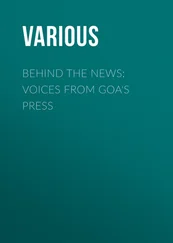Jeffrey Dvorkin - Trusting the News in a Digital Age
Здесь есть возможность читать онлайн «Jeffrey Dvorkin - Trusting the News in a Digital Age» — ознакомительный отрывок электронной книги совершенно бесплатно, а после прочтения отрывка купить полную версию. В некоторых случаях можно слушать аудио, скачать через торрент в формате fb2 и присутствует краткое содержание. Жанр: unrecognised, на английском языке. Описание произведения, (предисловие) а так же отзывы посетителей доступны на портале библиотеки ЛибКат.
- Название:Trusting the News in a Digital Age
- Автор:
- Жанр:
- Год:неизвестен
- ISBN:нет данных
- Рейтинг книги:4 / 5. Голосов: 1
-
Избранное:Добавить в избранное
- Отзывы:
-
Ваша оценка:
- 80
- 1
- 2
- 3
- 4
- 5
Trusting the News in a Digital Age: краткое содержание, описание и аннотация
Предлагаем к чтению аннотацию, описание, краткое содержание или предисловие (зависит от того, что написал сам автор книги «Trusting the News in a Digital Age»). Если вы не нашли необходимую информацию о книге — напишите в комментариях, мы постараемся отыскать её.
How to use critical thinking to discern real news from fake news in a Digital Age
Trusting the News in a Digital Age
Trusting the News in a Digital Age
Trusting the News in the Digital Age
Trusting the News in a Digital Age — читать онлайн ознакомительный отрывок
Ниже представлен текст книги, разбитый по страницам. Система сохранения места последней прочитанной страницы, позволяет с удобством читать онлайн бесплатно книгу «Trusting the News in a Digital Age», без необходимости каждый раз заново искать на чём Вы остановились. Поставьте закладку, и сможете в любой момент перейти на страницу, на которой закончили чтение.
Интервал:
Закладка:
Table of Contents
1 Cover
2 Title Page
3 Copyright Page
4 1 Introduction to News Literacy Definitions Digital Economics Why Some News is Suspect “Surprise” and “Delight” Why the News Has Appeal The Appeal of News Literacy “How Do We Know?” The Promises and Dangers of the Internet Why News Literacy Now? What Is “Reliable” Information? How the News Happens Now What's at Stake? Reference Additional Resources
5 2 Changing Definitions of News Watergate and the Role of the News News and Digital Culture The Rise of Digital Technology and Bias We MUST Share and Receive Information The Dominance of Images New Ways of Doing the News The “Uberization” of News The Dangers of “Clickbait” From Media Trust to Media Mistrust References Additional Resources
6 3 Why Should We Trust the News? Why Now? News Transparency and the Question of Trust The Value of Educated Guessing in Journalism Evidence Versus Assertion in News A Journalistic Checklist Getting to Trust What You Read, Hear, and Watch What Is Context and Why Do We Need It? The Rise of “Clickbait” References Additional Resources
7 4 Verification = Trust “Verify, Then Trust” Verification in an Era of News Abundance Journalistic Information How to Choose and What to Choose? How Has Verification Been Affected by This? Increased Democratization in News The Rise (and Fading) of the News Ombuds/Public Editor News Verification in the Digital Age Picking the Right Sources Credibility of Sources Remember: Not all Evidence Is Equal Service Journalism for News Literacy References Additional Resources
8 5 The Effect of Digital on Media Forms Better Technology = Better News? Better News = Larger Audiences? How Do We Know (It’s True?) Verification + Truth = Reliable News What About Polling? Media Accountability on Different Platforms References Additional Resources
9 6 When the Audience is Biased The News Organizations and Reputation The Need for News Scrutiny Why We Need a Free Media What is Fair? What is Balance? What is Opinion Journalism? Opinion Journalism is About Persuasion Does Advertising Tell the Truth? References Additional Resources
10 7 When the News is Biased The Value of Bias Can There Be Unbiased News? Should the News Lead or Follow? Why Should We Care About Bias? Is Bias Always Unfair? Cognitive Bias Among News Audiences TMI! Reference Additional Resources
11 8 The Economics of Journalism in a Digital Age The Business Case for Digital News The Economics of the News Business Making Digital Media Work for Citizens The Arrival of the Big Five Will Digital Journalism Survive? What's Next for Journalism in the Digital Era? References Additional Resources
12 9 Framing and Deconstructing the News Framing the News The Story of Political Change in the Middle East Erving Goffman and News Literacy Framing Techniques When Framing Fails Framing in Mainstream Media (MSM) and Digital Media The Rise of the “Prosumer” Framing Determines Presentation The Rise of the Algorithm in Journalism References Additional Resources
13 10 News Sources How Do We Know? What is a Source and Why Do We Need One? Who is Telling You the Truth? Protecting the Source Having a Personal Relationship With a Source Beware the “Double Hook” Attribution Who is Telling Us This? And Why Are They Doing So? Sources as Whistleblowers SLAPP Litigation Next Steps References Additional Resources
14 11 Trusting Journalism in a Time of “Fake News” An Age of Rising Mistrust of Absolutely Everything (and Everyone) The Rise of Digital (and Media) Skepticism News Doubled Down on Digital Can a Lack of Professionalism Save Journalism? What is “Fake News” Exactly? Who is behind “Fake News?” What Are Dissemination Mechanisms? Repetition of Internet Themes The Four Es Gresham's Law in Journalism References Additional Resources
15 Index
16 End User License Agreement
Guide
1 Cover Page
2 Title Page
3 Copyright Page
4 Table of Contents
5 Begin Reading
6 Index
7 Wiley End User License Agreement
Pages
1 iii
2 iv
3 1
4 2
5 3
6 4
7 5
8 6
9 7
10 8
11 9
12 10
13 11
14 12
15 13
16 14
17 15
18 16
19 17
20 18
21 19
22 20
23 21
24 22
25 23
26 24
27 25
28 26
29 27
30 28
31 29
32 30
33 31
34 32
35 33
36 34
37 35
38 36
39 37
40 38
41 39
42 40
43 41
44 42
45 43
46 44
47 45
48 46
49 47
50 48
51 49
52 50
53 51
54 52
55 53
56 54
57 55
58 56
59 57
60 58
61 59
62 60
63 61
64 62
65 63
66 64
67 65
68 66
69 67
70 68
71 69
72 70
73 71
74 72
75 73
76 74
77 75
78 76
79 77
80 78
81 79
82 80
83 81
84 82
85 83
86 84
87 85
88 86
89 87
90 88
91 89
92 90
93 91
94 92
95 93
96 94
97 95
98 96
99 97
100 98
101 99
102 100
103 101
104 102
105 103
106 104
107 105
108 106
109 107
110 108
111 109
112 110
113 111
114 112
115 113
116 114
117 115
118 116
119 117
120 118
121 119
122 120
123 121
124 122
125 123
126 124
127 125
128 126
129 127
130 128
131 129
132 130
133 131
134 132
135 133
136 134
137 135
138 136
139 137
140 138
141 139
142 140
143 141
144 142
145 143
146 144
147 145
148 146
149 147
150 148
151 149
152 150
153 151
154 152
155 153
156 154
157 155
158 156
159 157
160 158
161 159
162 160
163 161
164 162
165 163
Trusting the News in a Digital Age
Toward a “New” News Literacy
Jeffrey Dvorkin
University of TorontoToronto, Canada

This edition first published 2021
© 2021 John Wiley & Sons, Inc.
All rights reserved. No part of this publication may be reproduced, stored in a retrieval system, or transmitted, in any form or by any means, electronic, mechanical, photocopying, recording or otherwise, except as permitted by law. Advice on how to obtain permission to reuse material from this title is available at http://www.wiley.com/go/permissions.
The right of Jeffrey Dvorkin to be identified as the author of this work has been asserted in accordance with law.
Registered Office John Wiley & Sons, Inc., 111 River Street, Hoboken, NJ 07030, USA
Editorial Office 111 River Street, Hoboken, NJ 07030, USA
For details of our global editorial offices, customer services, and more information about Wiley products visit us at www.wiley.com.
Wiley also publishes its books in a variety of electronic formats and by print‐on‐demand. Some content that appears in standard print versions of this book may not be available in other formats.
Limit of Liability/Disclaimer of Warranty While the publisher and authors have used their best efforts in preparing this work, they make no representations or warranties with respect to the accuracy or completeness of the contents of this work and specifically disclaim all warranties, including without limitation any implied warranties of merchantability or fitness for a particular purpose.
Читать дальшеИнтервал:
Закладка:
Похожие книги на «Trusting the News in a Digital Age»
Представляем Вашему вниманию похожие книги на «Trusting the News in a Digital Age» списком для выбора. Мы отобрали схожую по названию и смыслу литературу в надежде предоставить читателям больше вариантов отыскать новые, интересные, ещё непрочитанные произведения.
Обсуждение, отзывы о книге «Trusting the News in a Digital Age» и просто собственные мнения читателей. Оставьте ваши комментарии, напишите, что Вы думаете о произведении, его смысле или главных героях. Укажите что конкретно понравилось, а что нет, и почему Вы так считаете.
